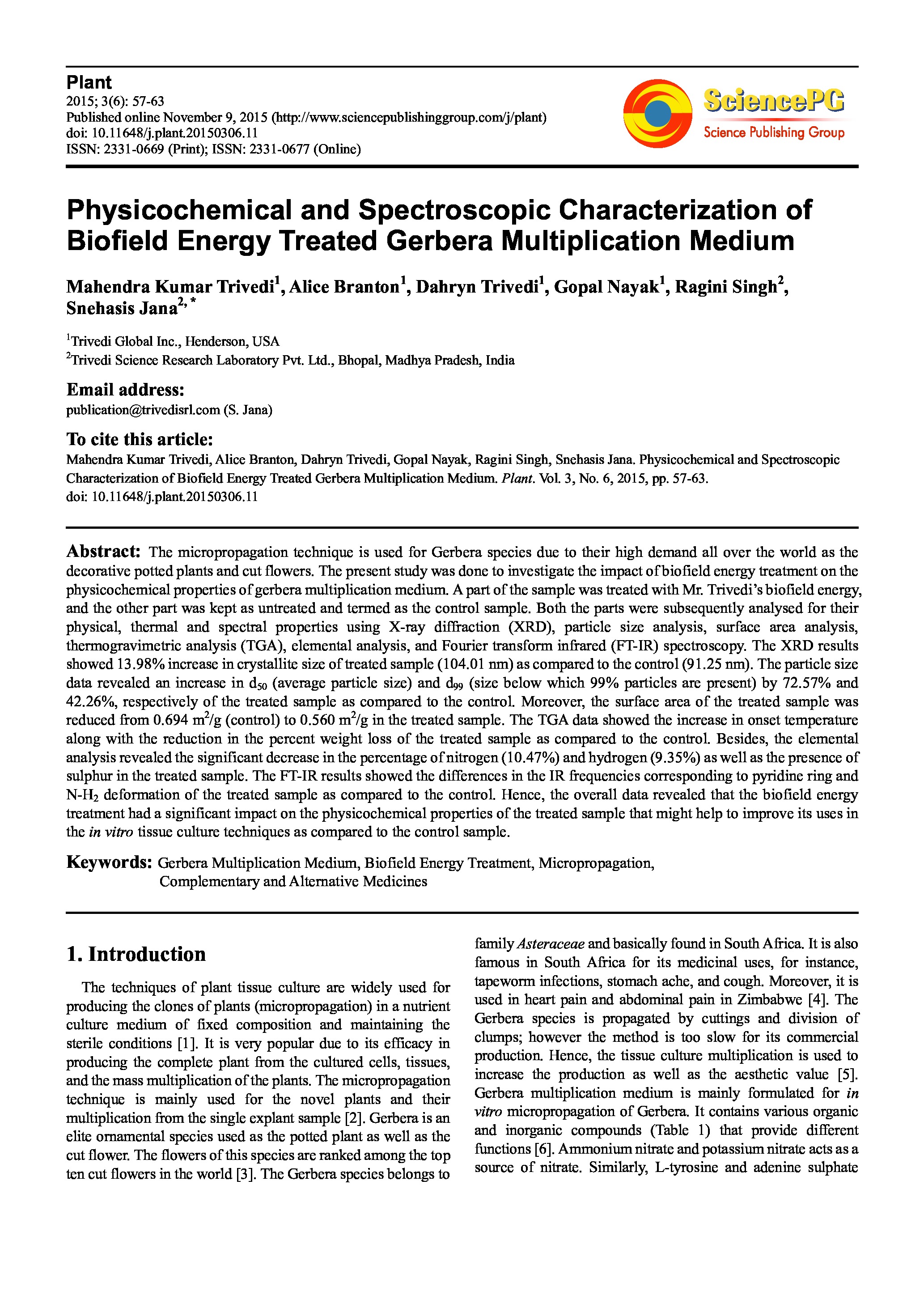Physicochemical and Spectroscopic Characterization of Biofield Energy Treated Gerbera Multiplication Medium
Affiliation
Trivedi Global Inc., Trivedi Science Research Laboratory Pvt. Ltd.
Main category
Natural Sciences (Biology)
Abstract
The micropropagation technique is used for Gerbera species due to their high demand all over the world as the decorative potted plants and cut flowers. The present study was done to investigate the impact of biofield energy treatment on the physicochemical properties of gerbera multiplication medium. A part of the sample was treated with Mr. Trivedi’s biofield energy, and the other part was kept as untreated and termed as the control sample. Both the parts were subsequently analysed for their physical, thermal and spectral properties using X-ray diffraction (XRD), particle size analysis, surface area analysis, thermogravimetric analysis (TGA), elemental analysis, and Fourier transform infrared (FT-IR) spectroscopy. The XRD results showed 13.98% increase in crystallite size of treated sample (104.01 nm) as compared to the control (91.25 nm). The particle size data revealed an increase in d50 (average particle size) and d99 (size below which 99% particles are present) by 72.57% and 42.26%, respectively of the treated sample as compared to the control. Moreover, the surface area of the treated sample was reduced from 0.694 m2/g (control) to 0.560 m2/g in the treated sample. The TGA data showed the increase in onset temperature along with the reduction in the percent weight loss of the treated sample as compared to the control. Besides, the elemental analysis revealed the significant decrease in the percentage of nitrogen (10.47%) and hydrogen (9.35%) as well as the presence of sulphur in the treated sample. The FT-IR results showed the differences in the IR frequencies corresponding to pyridine ring and N-H2 deformation of the treated sample as compared to the control. Hence, the overall data revealed that the biofield energy treatment had a significant impact on the physicochemical properties of the treated sample that might help to improve its uses in the in vitro tissue culture techniques as compared to the control sample.
DOI
10.18147/smn.2016/paper:178
Do you have problems viewing the pdf-file? Download paper
here
If the paper contains inappropriate content, please
report the paper. You will be redirected to the landing page.
